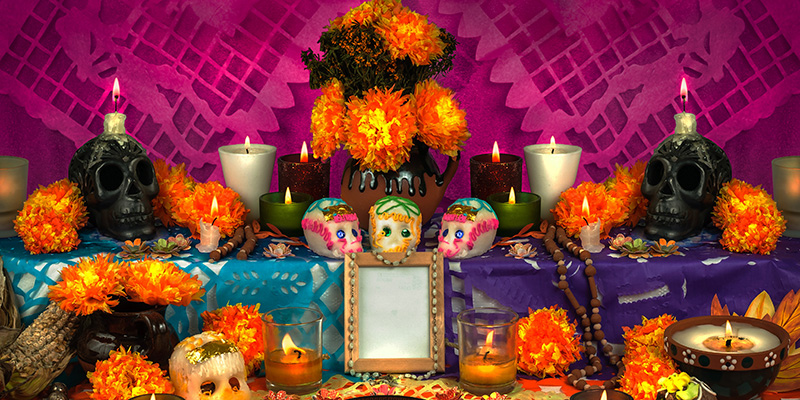Unlike modern day Americans, the Aztecs didn’t do “Halloween” specifically, meaning they didn’t send their kids around the neighborhood in Bernie Sanders/Larry David costumes asking for Twix from strangers. But the Aztecs did acknowledge one day of the year in which the veil between the living and the dead was at its thinnest, where communication and reaching lost loved ones had very little to do with the Mars candy corporation.
And they did it with food, and drink, and joy. (OK, yes, they also sacrificed people.)
The Aztec ritual of honoring the dead with a small party (music was included) became what we know as the Dia de los Muertos, the Day of the Dead, celebrated in Mexico from November 1st to the 2nd with everything from sugar skulls to a loved one’s favorite food to Pan de Muerto, or “bread of the dead,” a sweet bread decorated with bone shapes, the only food product we know of that acknowledges mortality in carb form. The Day of the Dead used to be held in the middle of the Aztec year, but once the Spanish arrived, it was moved to occur on All Saints’ Day, merging some ancient Aztec beliefs with a dose of Catholicism.
Typically the offerings presented to a loved one on the Day of the Dead are set out on an altar called an “ofrenda,” which translates to offerings. These alters tend to be incredibly festive-looking, and may be set with anything from the aforementioned food items to Monarch butterflies (thought to be reincarnated souls of the dead, coming for a visit) to photos of the dead, flowers, and the classic sugar skulls. The results are some of the most ornate, vibrant “tablescapes” you’ll ever see, an acknowledgment of both the fragility of life and the joy and love for those we’ve lost. A far cry from a sugar-binge or horror movie marathon.
Of course we wondered whether liquids make their way into the ofrendas, and indeed they do. The old school offering was pulque, an ancient, viscous, milky drink made by fermenting the sap of the maguey plant (basically the big, burly, frothy older brother of tequila and mezcal). Believed to be the drink of the Aztec gods, pulque is actually still made today, though (unlike tequila and mezcal) it clocks in at a much lower ABV (single digits, tops) because it isn’t distilled. In fact, it could be argued pulque is one of the healthier boozy beverages out there, since it contains stuff like protein, calcium, potassium, and iron. Not that pulque has been historically progressive. Back in the day, it was served in a pulqueria, and women weren’t allowed.
Times have changed, of course, and women are free to enjoy pulque (encouraged, actually, during pregnancy?). But as far as your ofrendas goes, pulque isn’t the only offering. Anything from soda to tequila to whatever beverage a loved one liked best is fair game.

